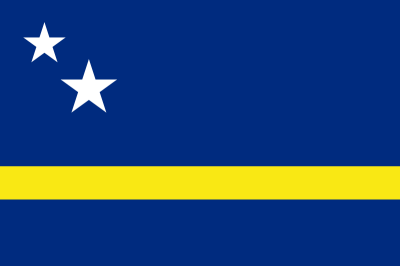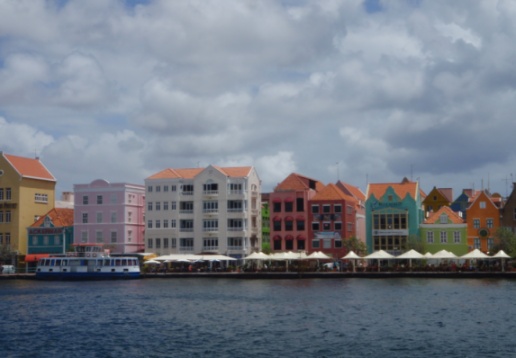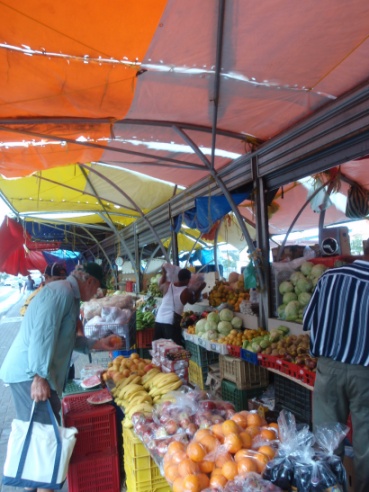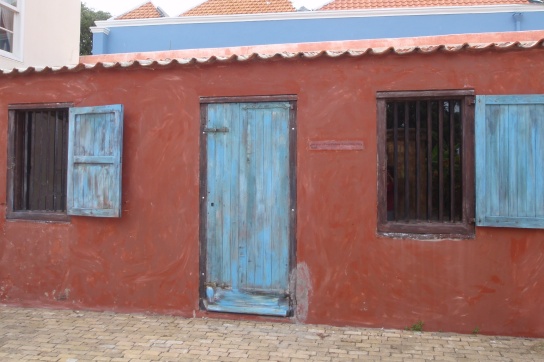CURACAO

Curacao was our second stop in the ABC Islands. It is west of Bonaire and east of Aruba.
Curacao’s history was discussed with that of Aruba and Bonaire on our ABC Islands page. However, Curacao has some unique history worthy of mention – specifically its role in slavery.
The natural harbor of Willemstad was a center for shipping, and it became the hub of the Caribbean slave trade from 1662 to 1862. Slave ships unloaded their human cargo in Willemstad, and slaves were distributed via Curacao’s slave markets. It is estimated that 12 million West Africans were kidnapped and shipped to Curacao. Approximately 10 million survived the Atlantic crossing. Less than 1 million of those went to the United States. Approximately 5 million went to Brazil, and the remaining 4 million went to various locations throughout the Caribbean. It is a shameful chapter in Curacao’s history that has been commemorated in the Hura Hulanda Museum which was our primary reason for visiting Curacao.
Curacao is another small dusty island. It is 171 square miles, and its highest point is only 1230 feet, but it has a colorful and vibrant capital, Willemstad.
Willemstad is a twin city divided by the channel leading in to the main harbor. The eastern part of the city is called the Punda, and the western part is called the Otrobanda. There is a small floating bridge across which one can walk, and there is a ferry that runs almost non-stop. Vehicles cross over the large Queen Julianna Bridge.
Willemstad is a city of impressive buildings combining Dutch and Spanish architecture. It is now a UNESCO World Heritage Site.
It has numerous restaurants and markets. Along the waterfront on the Punda side is the ‘floating market’ that sells fresh fish and fruits. It is not really a floating market – it is on the sidewalk. However, the Venezuelan boats that provide the fish and fruits are floating just a few feet away.

Willemstad waterfront on Punda side
Dutch colonists made substantial income from slavery, and that income is reflected in the buildings of Willemstad. Curacao experienced an economic shock when slavery was abolished in 1863, and many emigrated for work elsewhere. Others remained in a tenant farmer system.
Curacao’s economy did not recover until oil was discovered in Venezuela’s Maracaibo Basin in 1914. Royal Dutch Shell and the Dutch government built an extensive oil refinery which created many jobs. A wave of immigration followed. However, the refinery could not meet emission standards, so it was sold for a symbolic amount to a government consortium in the 1980s. The consortium leases it to the Venezuelan state oil company PDVSA, but many jobs remain.
Tourism remains a vital part of Curacao’s economy. The island also offers low corporate taxes to encourage companies to do business there.

‘Floating’ market
We had a fast and easy sail from Bonaire to Curacao. It was approximately 40 miles, so we had enough daylight to make it in one day. We slipped our mooring at 0745 on March 26 and went around the north end of Klein Bonaire. We put up the main with a single reef and the entire #2 jib. We headed almost due west with 16-17 knots of wind on our port quarter, and we maintained more than 6 knots of boat speed almost the entire way. Our anchor was secure in Spanish Waters, Curacao six hours and twenty minutes later. A very nice sail.
We got a little help and quickly figured out the local bus system so that we could travel between the anchorage in Spanish Waters and Willemstad. We had to travel there to check in and out, and we also spent one day there being tourists.
The offices for customs and immigration are some distance apart on opposite sides of the channel, so one must plan at least half a day to complete formalities. However, it provided a good walking tour of the waterfront areas of the Punda and Otrobanda.
We explored various marketplaces, shopped at the ‘floating market’, and had lunch at a seemingly local barbecue restaurant. But our most interesting stop was a visit to the Kura Hulanda Museum.
Kura Hulanda is Dutch for ‘Dutch Yard’. The site of the museum was once a venue for selling slaves.
The museum was privately developed by Jacob Gelt Dekker. It is a broad look at African history, slavery in the Caribbean and US, and African art. It includes many documents, photos, and artifacts. We had different reactions to the museum.
Bud was moved by it. At one exhibit, he had to physically move some shackles aside to read what was written. He was moved by the horrific conditions that were well documented.
Nita was disappointed. Although she thought this was an impressive display of African art, she did not learn what she had hoped about Curacao during its two centuries of slavery.

Slave prison at Kura Hulanda Museum
However, we both thought it was time well spent – even if it was not what we had hoped it would be.
Only four days after arriving we saw a weather window to sail on to Aruba, so we left Curacao. The sail to Aruba would be approximately 80 miles – too far for a day sail. So we planned an overnighter. We left Curacao at 1738 on March 30 with plans to arrive in Aruba shortly after first light the next morning.
Go to our ABC Islands page or the other ABC Islands of Aruba or Bonaire
Or return to our Caribbean page